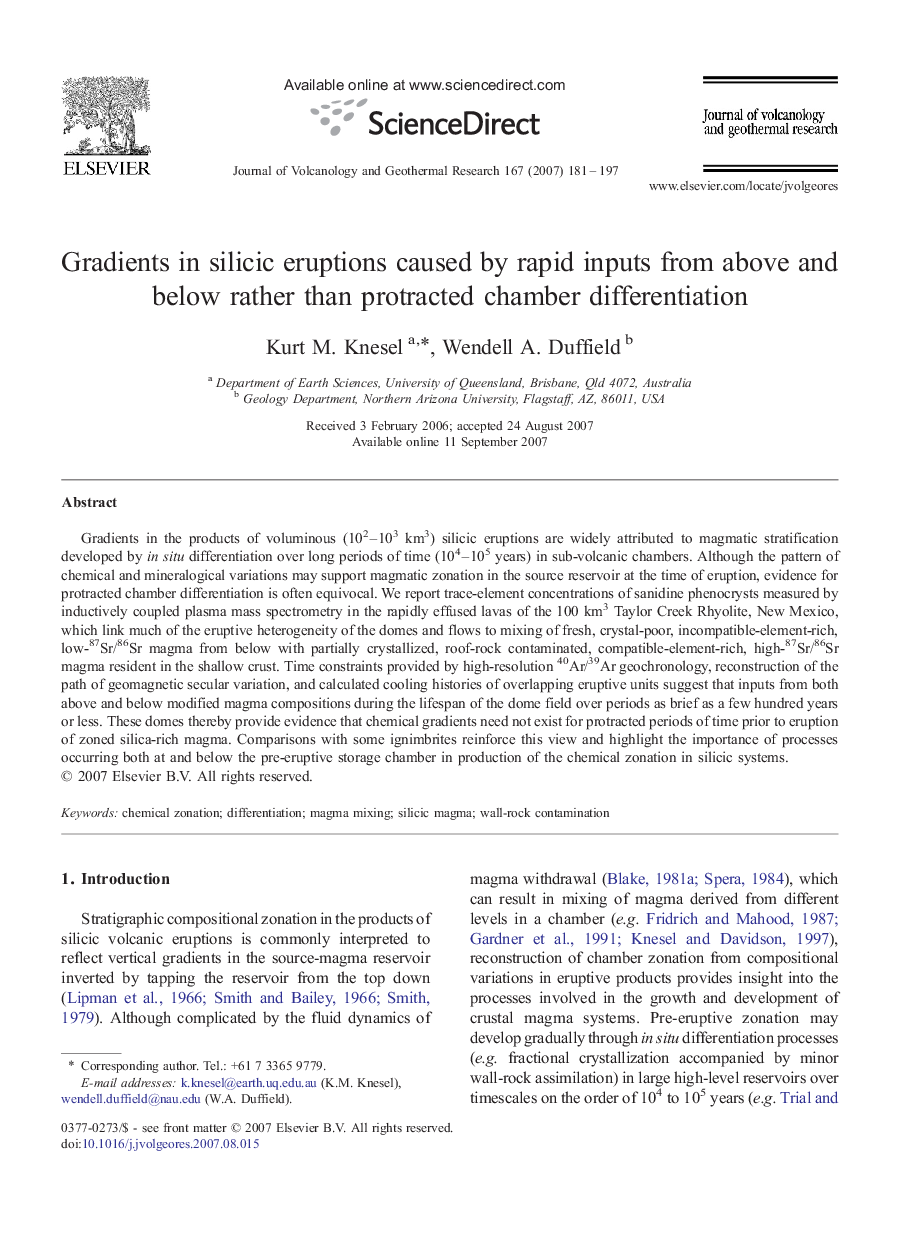| Article ID | Journal | Published Year | Pages | File Type |
|---|---|---|---|---|
| 4714863 | Journal of Volcanology and Geothermal Research | 2007 | 17 Pages |
Gradients in the products of voluminous (102–103 km3) silicic eruptions are widely attributed to magmatic stratification developed by in situ differentiation over long periods of time (104–105 years) in sub-volcanic chambers. Although the pattern of chemical and mineralogical variations may support magmatic zonation in the source reservoir at the time of eruption, evidence for protracted chamber differentiation is often equivocal. We report trace-element concentrations of sanidine phenocrysts measured by inductively coupled plasma mass spectrometry in the rapidly effused lavas of the 100 km3 Taylor Creek Rhyolite, New Mexico, which link much of the eruptive heterogeneity of the domes and flows to mixing of fresh, crystal-poor, incompatible-element-rich, low-87Sr/86Sr magma from below with partially crystallized, roof-rock contaminated, compatible-element-rich, high-87Sr/86Sr magma resident in the shallow crust. Time constraints provided by high-resolution 40Ar/39Ar geochronology, reconstruction of the path of geomagnetic secular variation, and calculated cooling histories of overlapping eruptive units suggest that inputs from both above and below modified magma compositions during the lifespan of the dome field over periods as brief as a few hundred years or less. These domes thereby provide evidence that chemical gradients need not exist for protracted periods of time prior to eruption of zoned silica-rich magma. Comparisons with some ignimbrites reinforce this view and highlight the importance of processes occurring both at and below the pre-eruptive storage chamber in production of the chemical zonation in silicic systems.
